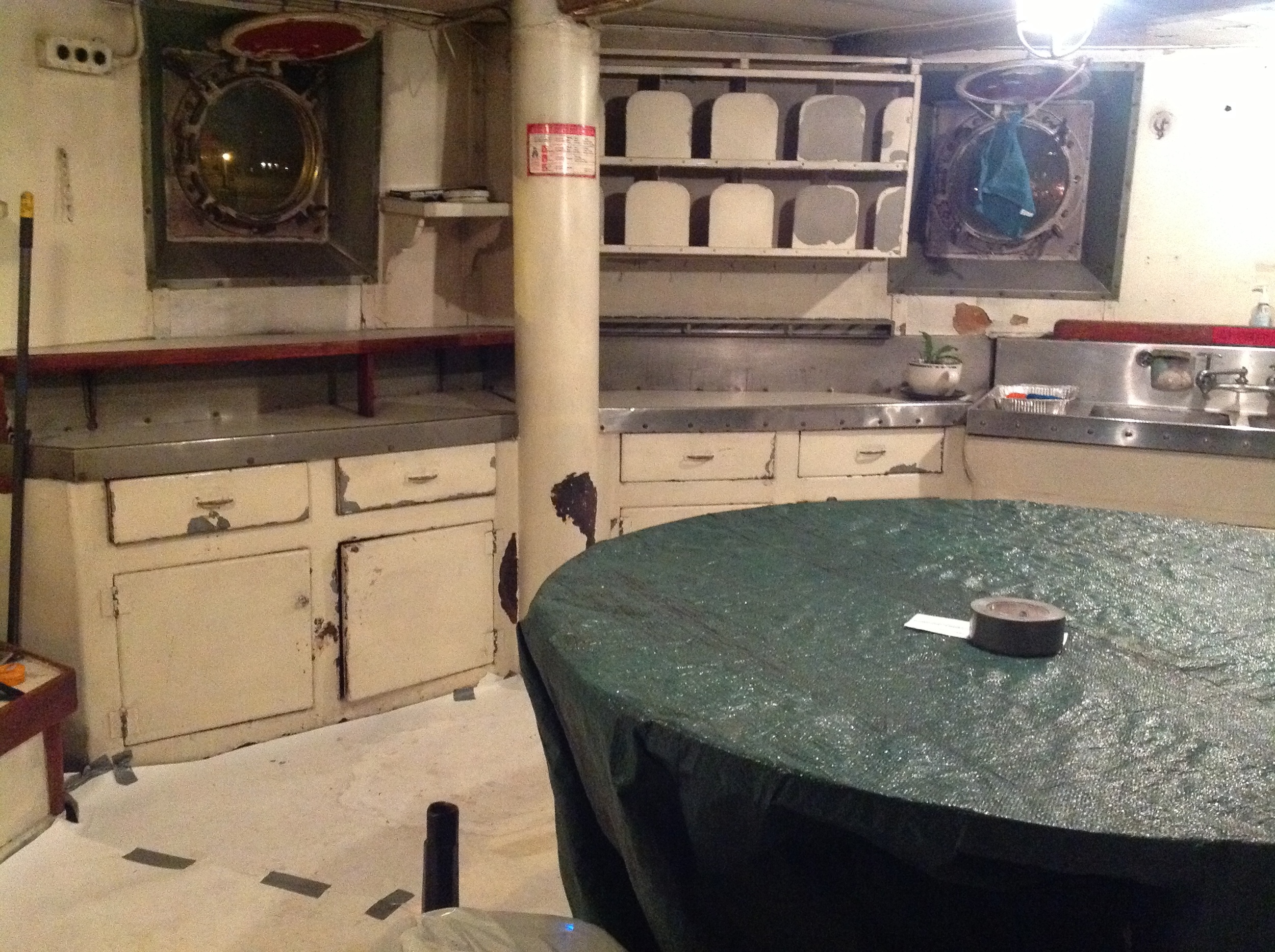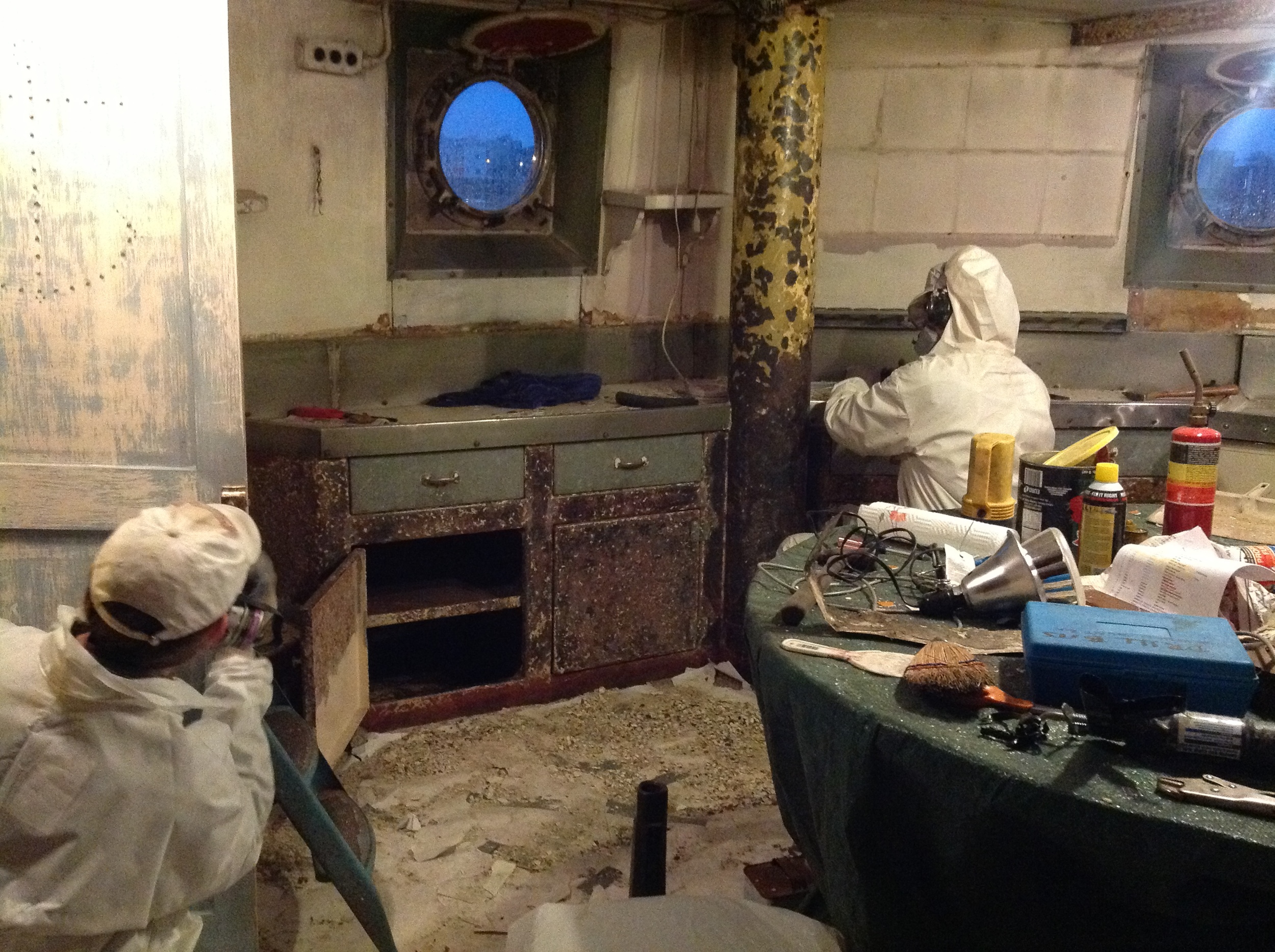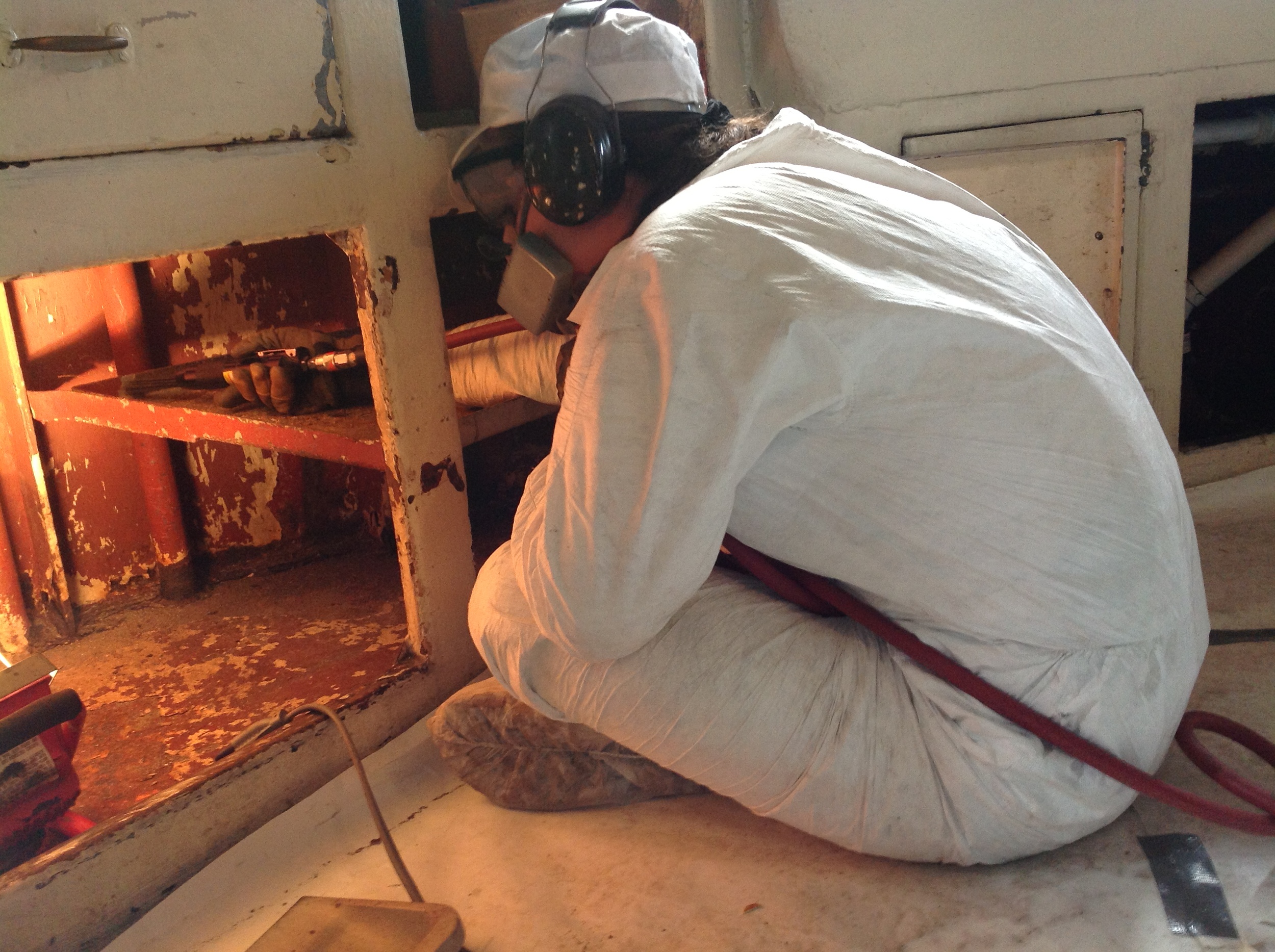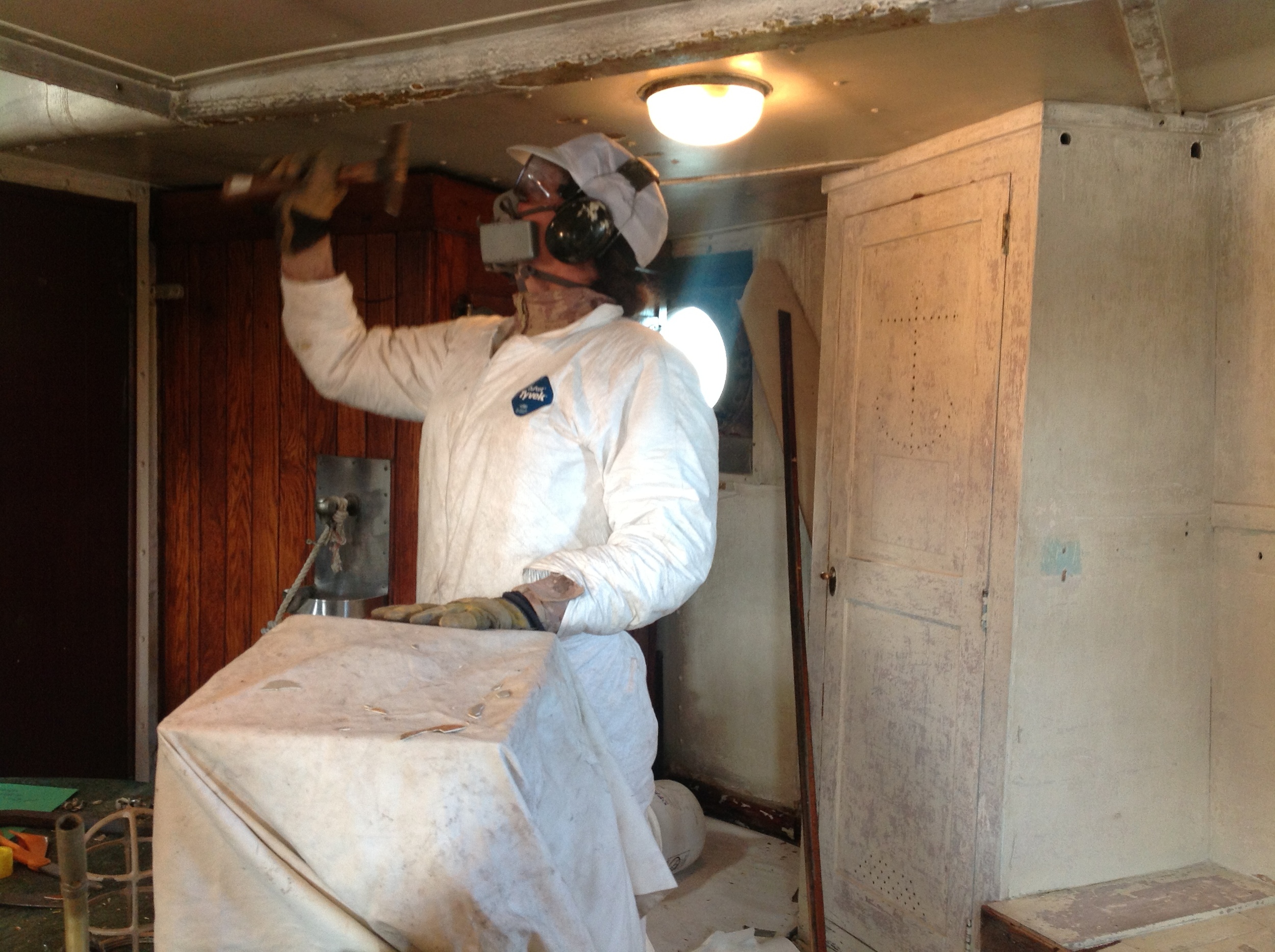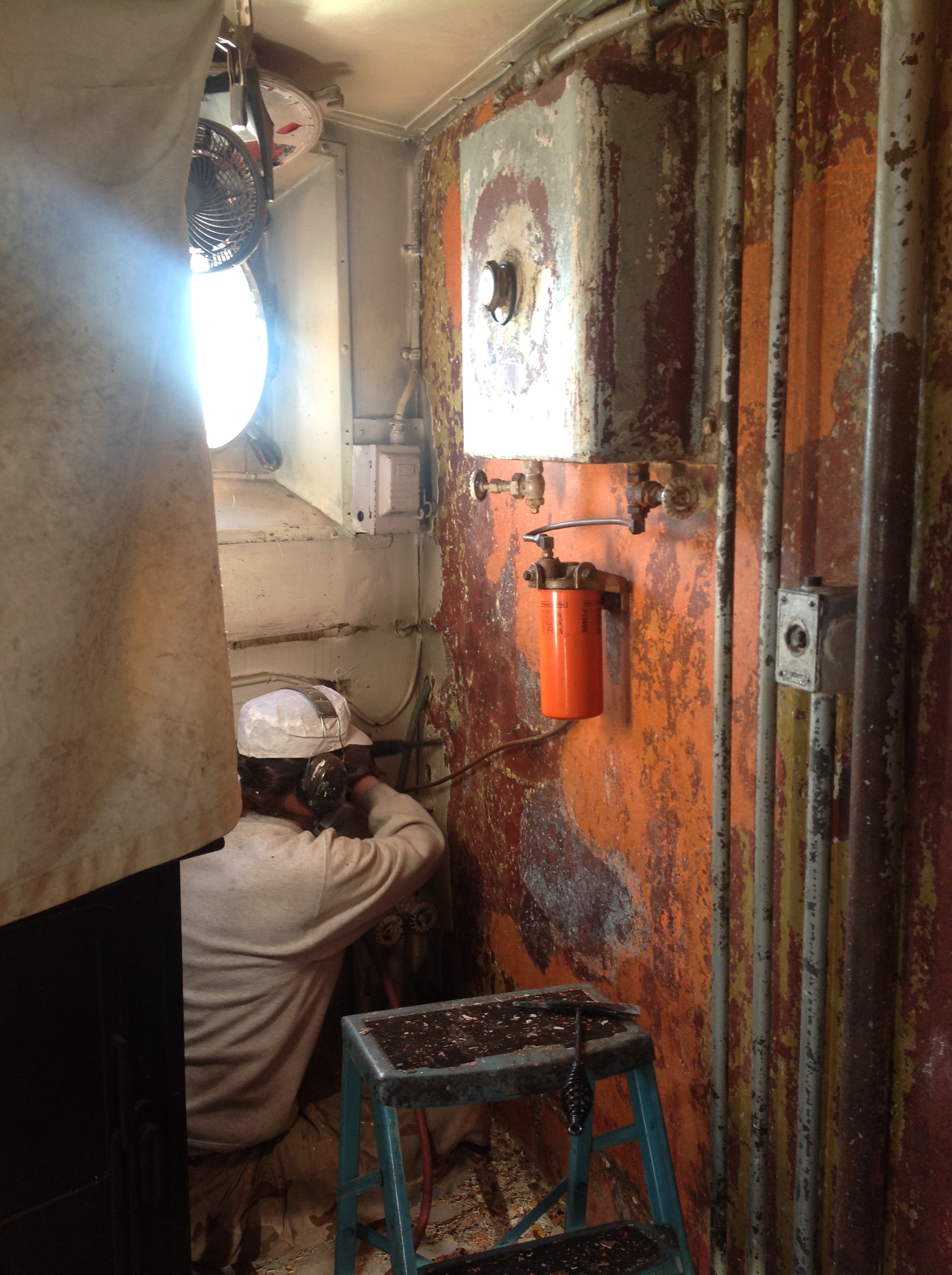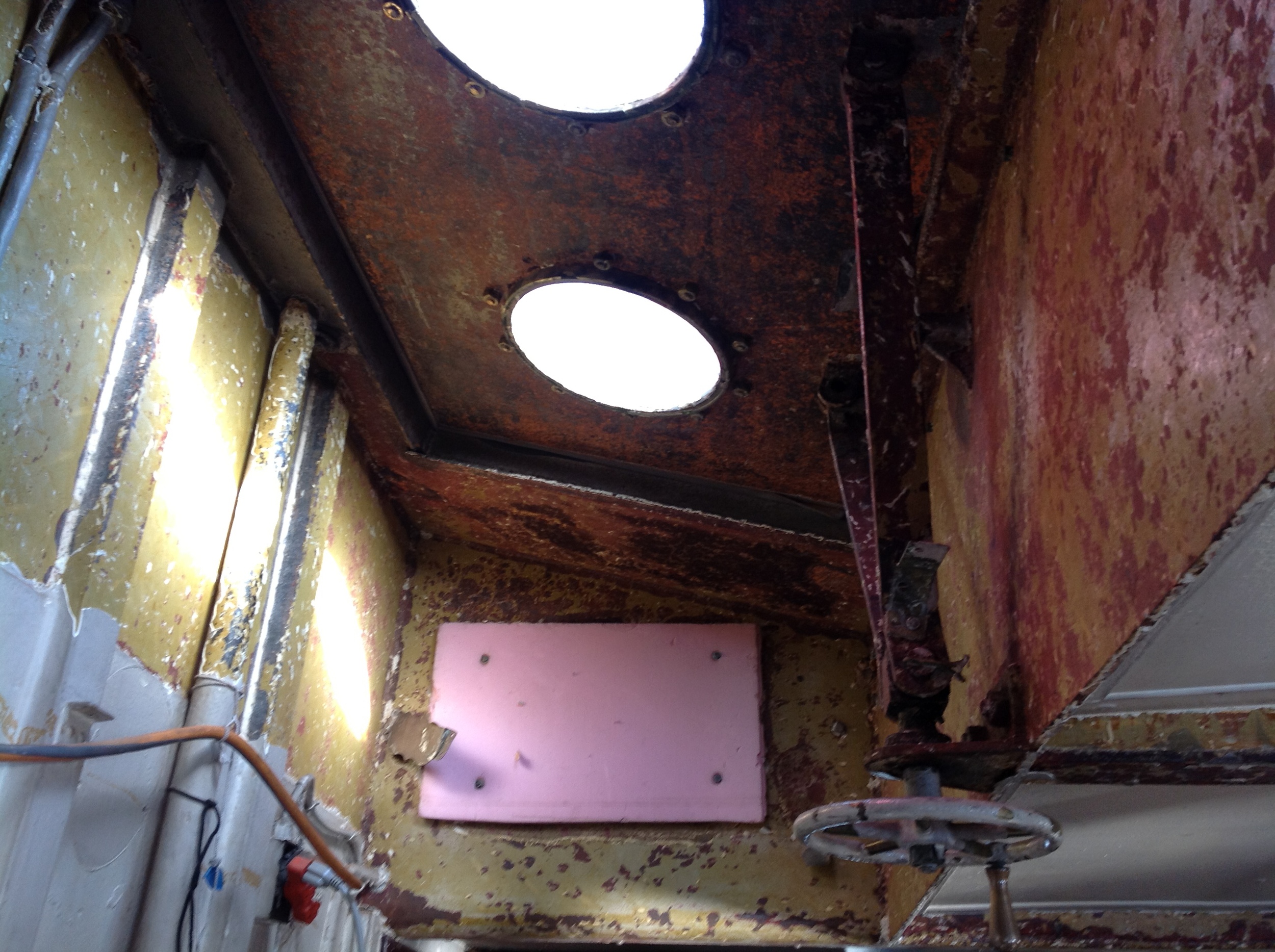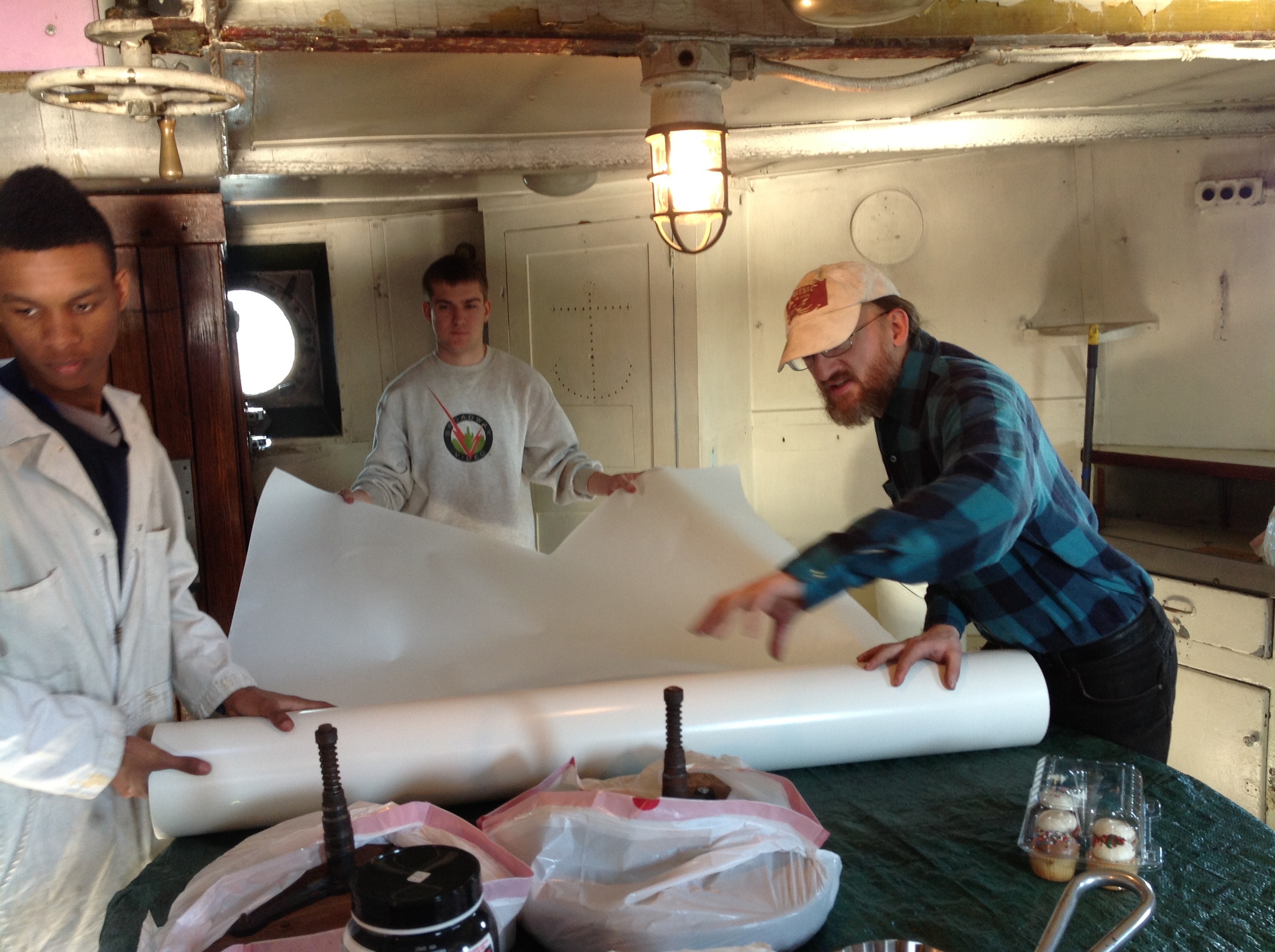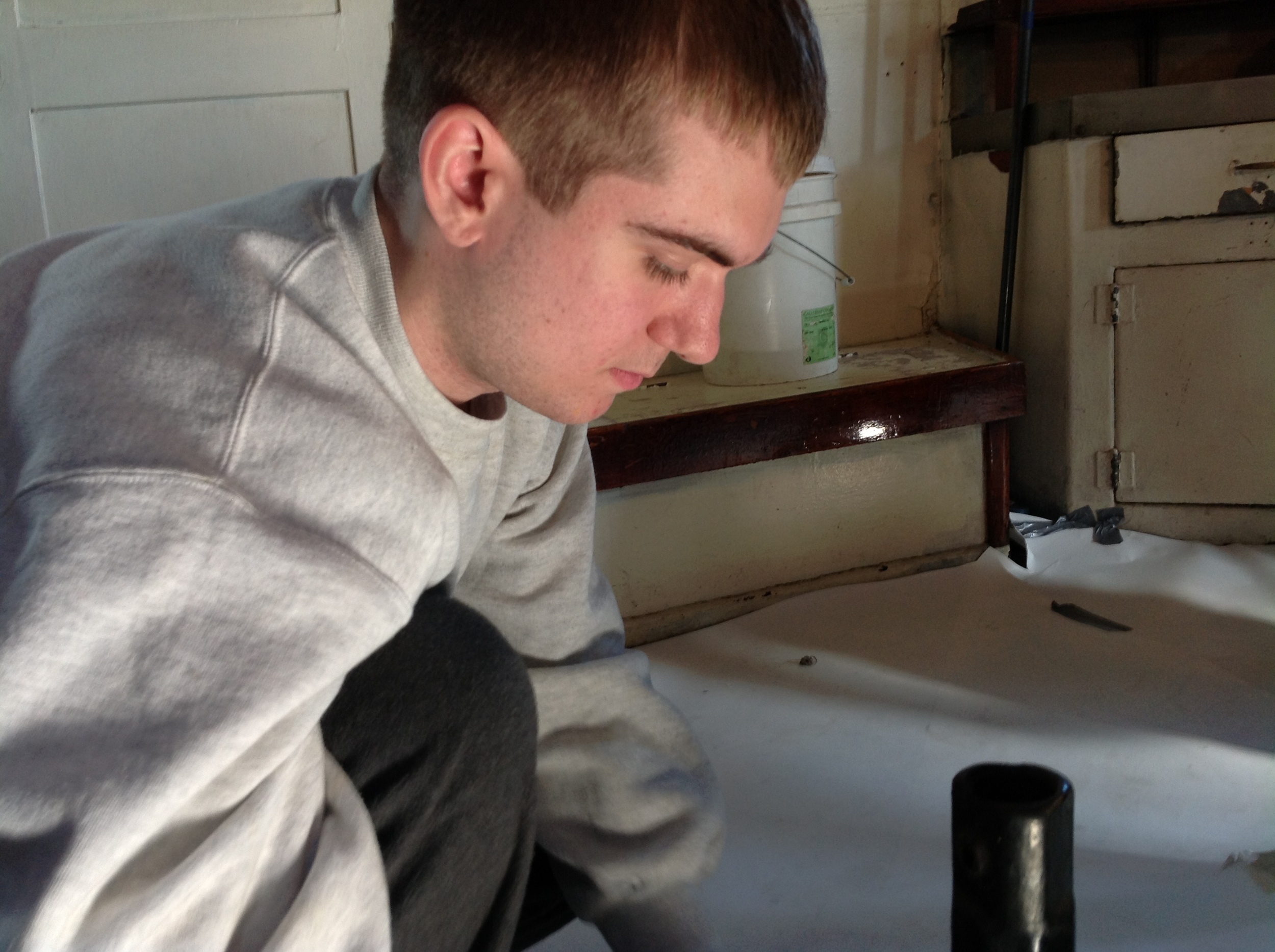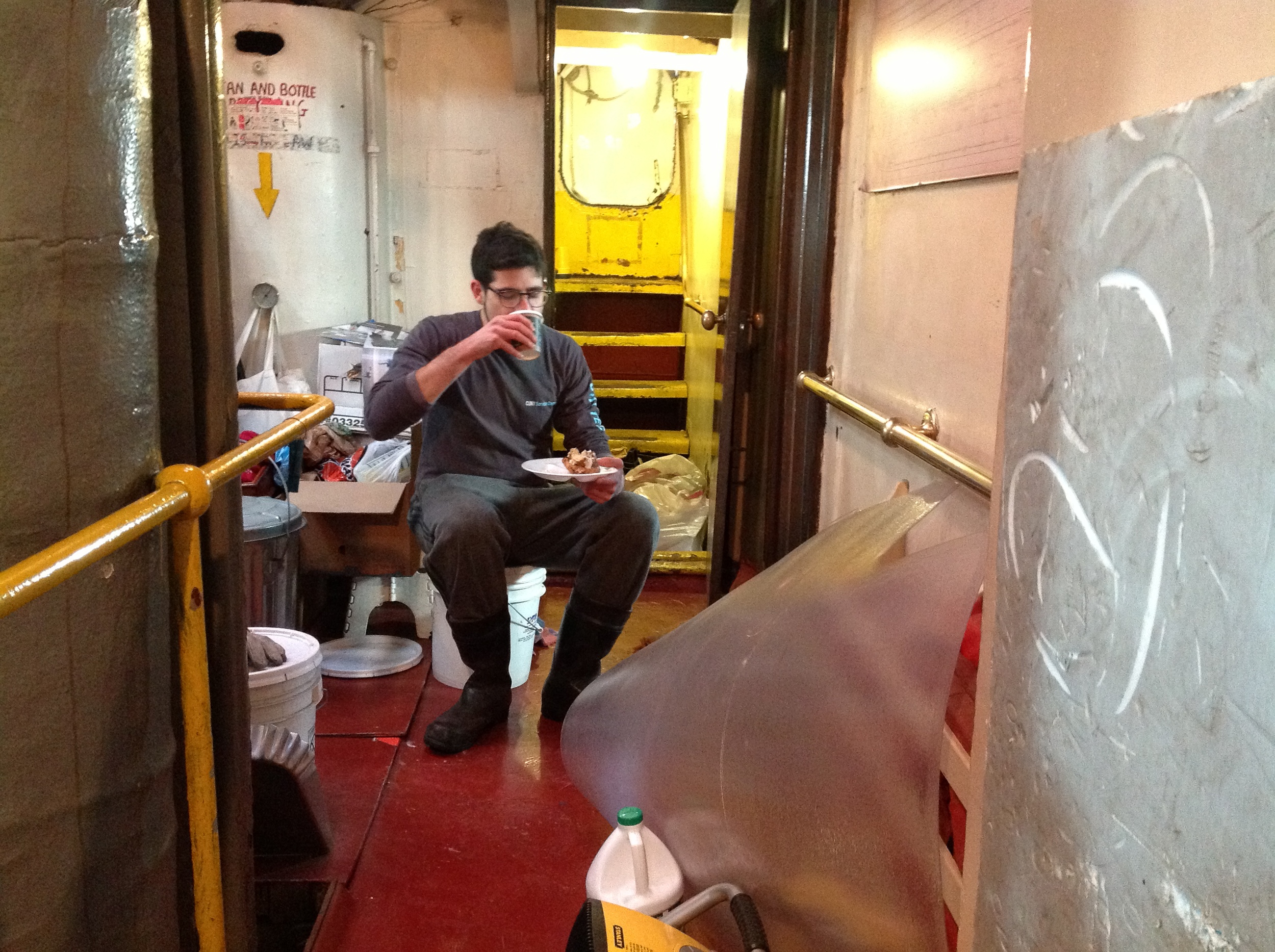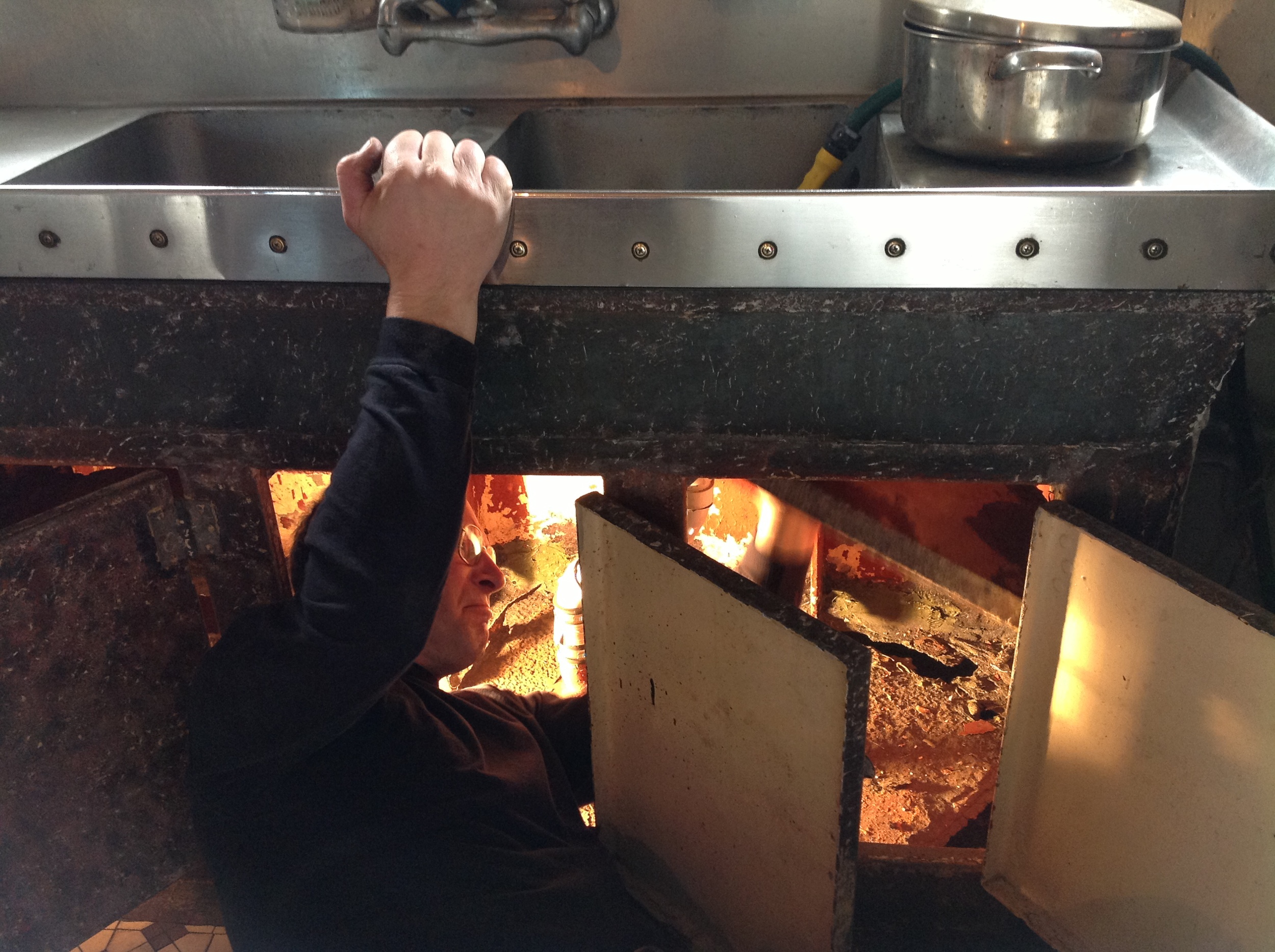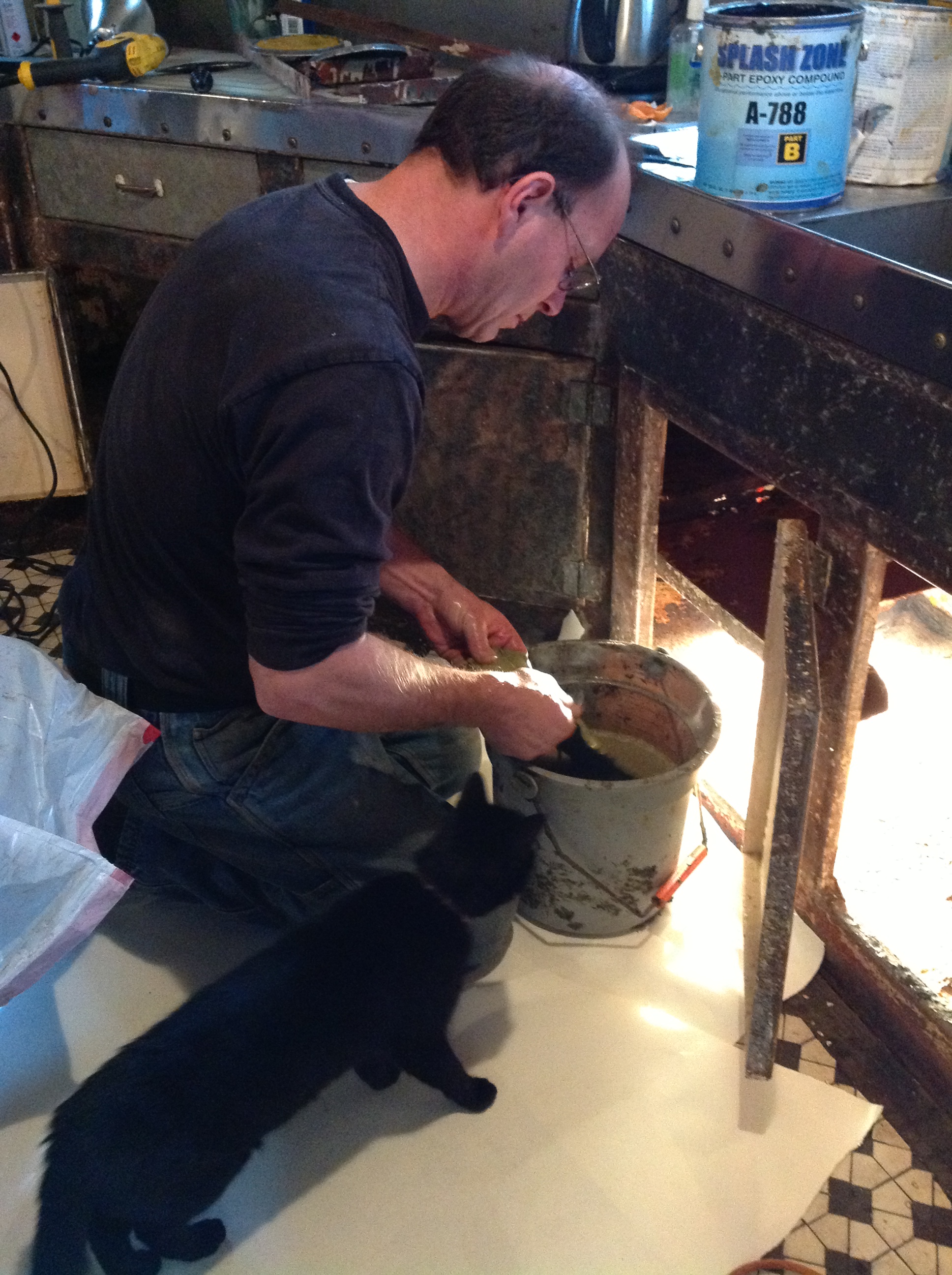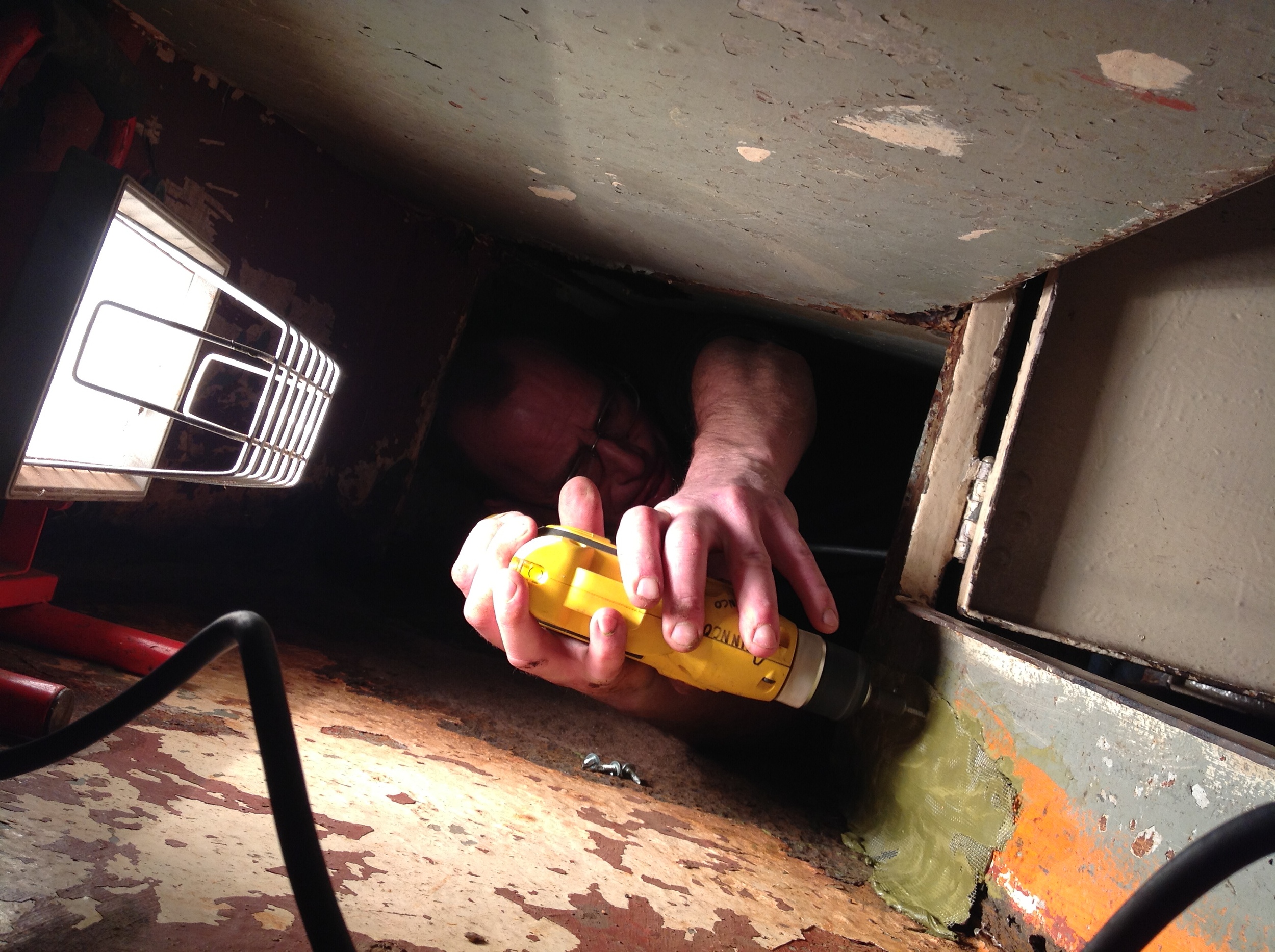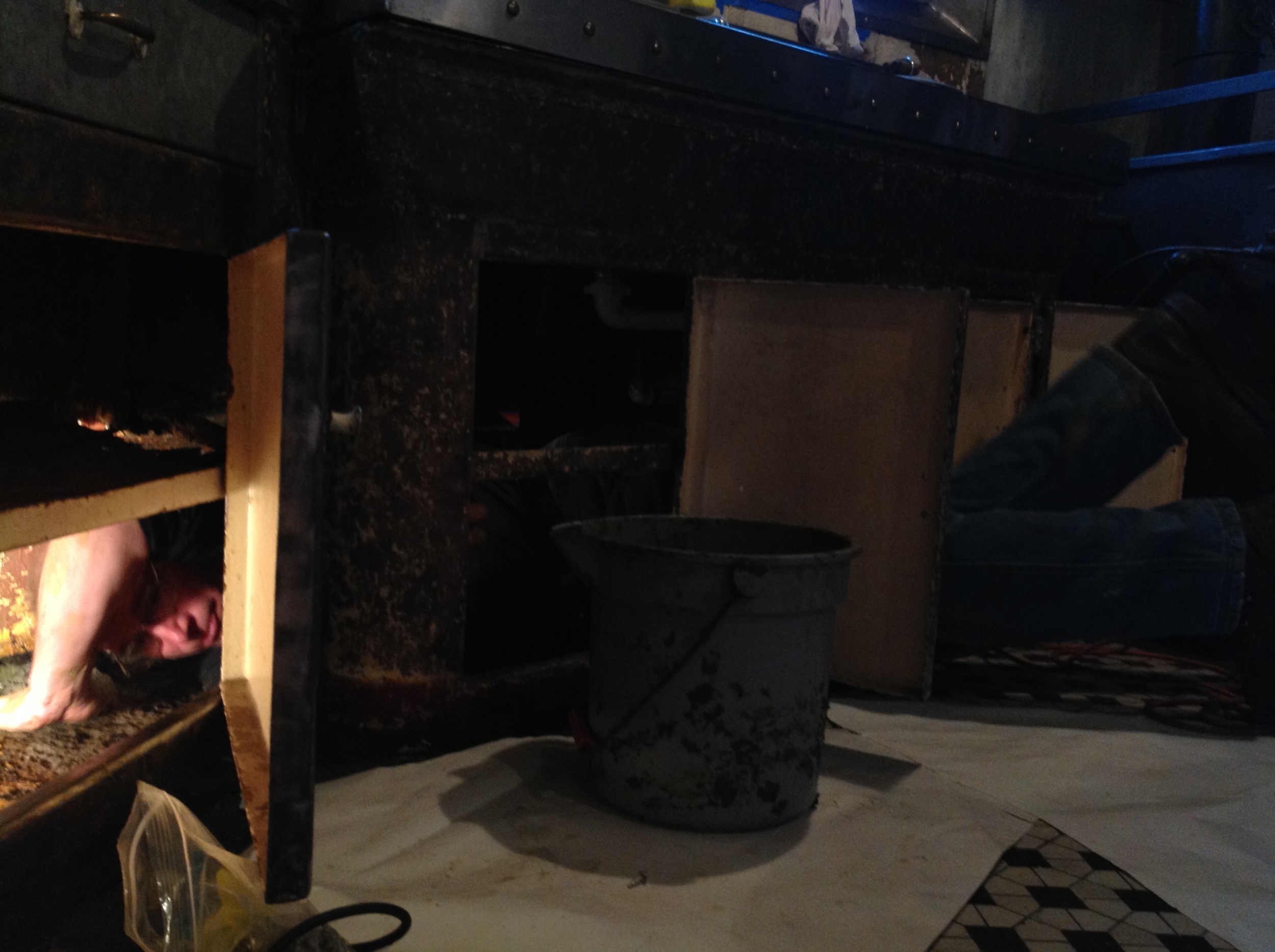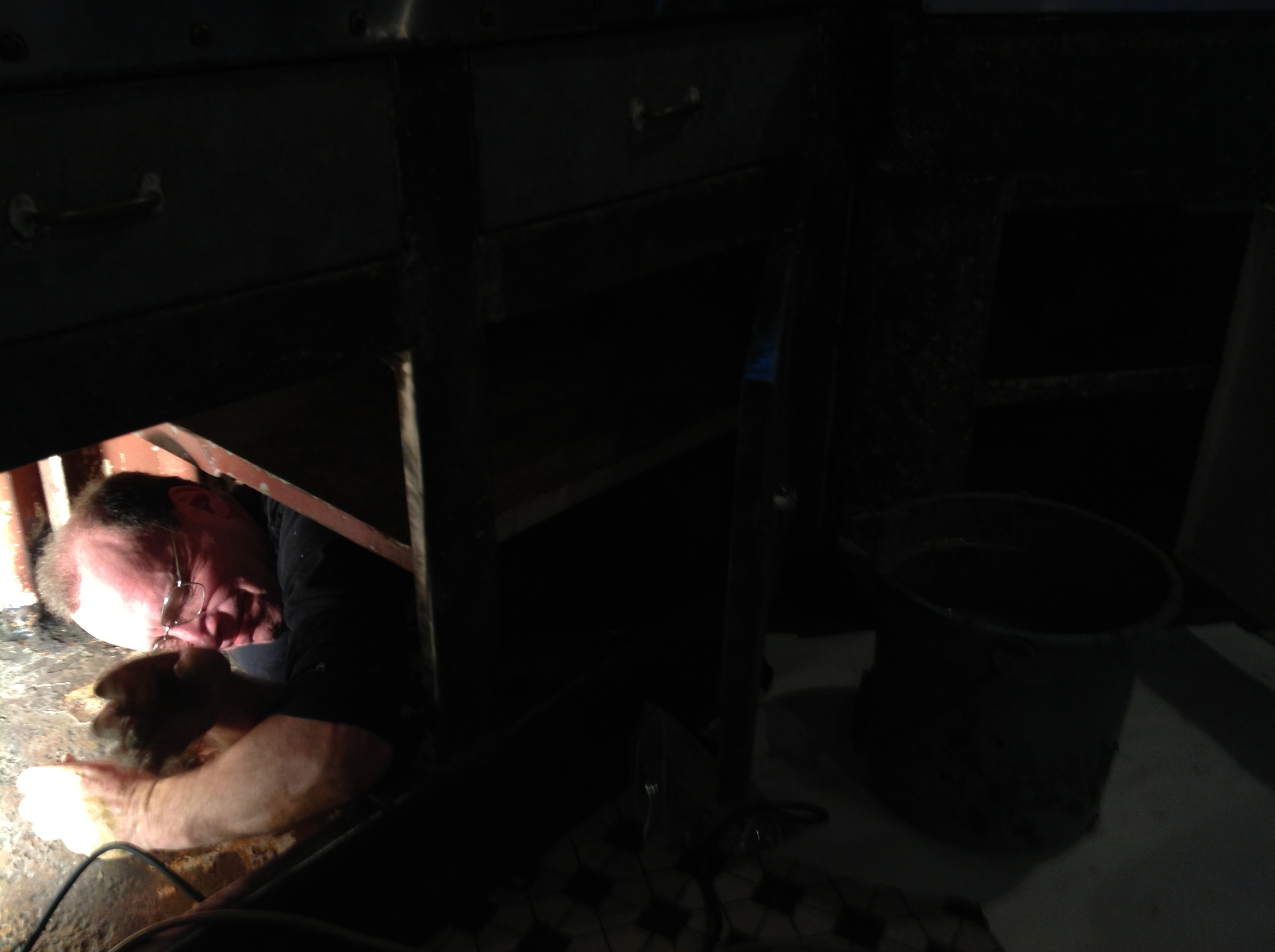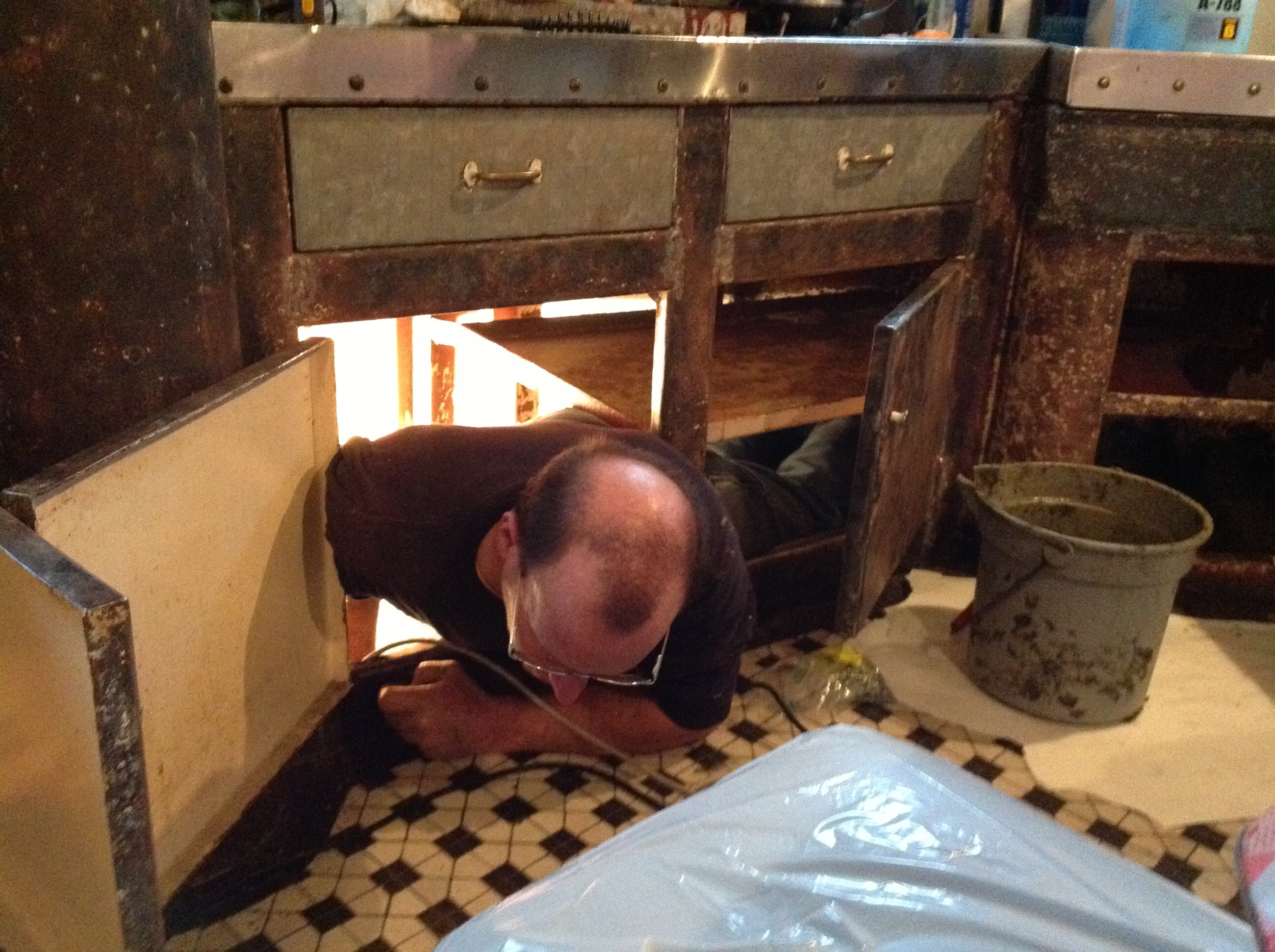Great strides on the galley renovation! Update on "This Old-Ship-Kitchen" project
/In between bouts of snow shoveling (will it ever end?!) we have been beavering away on the galley renovation.
Carolina Salguero & Paul Amico getting ready for sanding.
As happens with renovating old things, the project got bigger as our work uncovered hidden problems which we will then fix. Thanks to this project, the MARY A. WHALEN will be stronger as well as better looking!
As also happens with an educational institution like PortSide, renovation has strong components of historical research and becomes a program, an opportunity to teach you the reader, our December volunteer, and even us!
If you are joining the story here, this galley project kicked off when someone got in touch out of the blue to volunteer 40+ hours a week throughout December. That hero was Erika Stetson, an Air Force vet who was going to benefit by getting a crash course in ship maintenance to better prepare her for entering SUNY Maritime College in January.
Working with Erika had a double benefit for PortSide NewYork: it enabled us to fulfill our mission to use the MARY A. WHALEN for maritime training AND get a lot of renovation done.
According to Erika her stint with us helped her! In early January she emailed to say “I was named the honor cadet (top cadet) in my section. I also got chosen for a program with only 18 spots. It allows me to live aboard the ship full time as well as work aboard for about 20 hours per week. This gives me the chance to get a lot more shipwork experience on my resume over the next three years, a lot more mentorship from the mates, and eliminates my housing costs.” She feels that getting familiar with air tools and the like aboard Mary Whalen probably helped her application for the berthing.
Painting is about to start. We could use volunteers! Get in touch if you want to help.
Renovation update
Erika Stetson was a December powerhouse of paint removal with HEAVY of work on chipping hammer and needlegun. She was joined over the Christmas holidays by Steve Swift, the ex-Engineer of ERNESTINA who helped us stabilize the Sandy damage to our replacement engine parts over Christmas 2012. Thank you, Steve, two years running!
Peter Rothenberg and others followed up with grinders. All paint has come off the rudder post, the exterior of the cabinets and the steel bulkhead by the stove, the skylight area, overhead beams and other spots.
The plate rack and two shelves were removed for stripping at East End Wood Strippers (recently of Union Street in Gowanus) who are donating their labor to this project.
As paint layers came off, we are tryig to suss out the original color scheme. Amidst many layers of paint, we find a soft apple green (a 1930s hue revived by Martha Stewart) on the bulkheads wrapping around the curve of the space. The color matches a vintage teapot (at right) donated to us by John Weaver, son-in-law of MARY A. WHALEN Captain Alf Dryland. The cabinets under sink and counter were always white, as was the rudder post and the overhead. The forward bulkhead near the stove went through many colors, and we find the green by the stove. It was always white underneath the skylight, with the white there helping to bounce the sunlight into the space.
After Erika, Peter Rothenberg and the CUNY crew went after the detail work
We gave ourselves a lull in dust-production between the needle gunning and the sanding. Three of our four CUNY Service Corps students Joshua Washington, Trevor Colliton and Chris Zoupanitiotis stepped in to handle the delicate job of stripping paint off the Monel metal and the tiles on the floor with chemical stripper. They never worked in the dust. The fourth "CUNY" Renee Fayzimatova was off during January break.
The "CUNYs" were reversing the work of someone crazy for painting back in the day – some black floor tile was painted black and much of the decorative metal was painted-- the Monel porthole surrounds, plate rack and stove hood. Getting the paint off the bronze portholes is very hard by hand, so the plan is to remove them completely and take them to the Paint Strippers Company along with the shelves.
Needle gunning inside the cabinets exposed a weakness related to MARY’s good looks.
The sides of the MARY’s house lean slightly inward which gives her lines greater grace; but that means that if portholes are not closed perfectly tight, the water running down the outside of the ship will run right into the boat.
What that means is rust from the inside. As someone said “these old boats rot from the inside out.” Add to that sink leaks (but not our watch!) which evaporated near the hot galley stove and condensed over by the rudder post. The galley cabinets had no air holes, so the space became a humid terrarium with cycles of evaporation and condensation. (We will be installing cabinet vents on the sides where they will not change the look of the space.)
As a result of 75 years of the "terrarium effect," we found wasted steel: Carolina Salguero holed the exterior steel while needle gunning (though well above the waterline!), and Erika went through some of the cabinet steel near the sink.
Thanks to the wonders of the wonders of pricey Splash Zone epoxy, metal screen and self tapping screws and Paul Amico cramming himself into the small cabinet, small patches were screwed to fill the holes, with the patches to be finished off with Marine Tex epoxy. Corroseal or Ospho (more pricey stuff, time to donate, Dear Reader) rust converter stops the rust dead before we repaint.
At one point, Paul couldn’t back out from under the sink and had to pull himself around through most of the cabinets! That show (below) really fascinated Chiclet who comes in to inspect whenever power tools are not running.
We also learned are that the cabinet drawers are probably not original, thanks to Paul Amico who explains,
"The existing galley drawers are fabricated from electrogalvanized sheet metal. This process was in its commercial infancy in the 1930's and wasn't truly perfected until the 1960's. It is commonly used in duct work and rarely used where it would have abrasive contact of any sort, such as where drawers rub on the rails. This contact would wear out the thin protective film of zinc which would nullify its true intention. That, along with the fact that I haven't witnessed any other electrogalvanized metal on board, leads me to believe these are not original."
We now believe a large fan was bolted to this shelf. Once we did some heavy sanding of this shelf, we found the outlines of two circular items which had been bolted on it over the years.
We presume the first drawers rusted out (leaks from the counter and portholes), and we're sure the current cabinet hardware is not original. Once the cabinet paint was removed, we found the holes and marks of earlier hardware and are looking for 1930s latches that resemble the pattern of the holes.
Conferring with the helpful folks on the tugboatinformation group of Facebook, which includes several former crew members of the MARY WHALEN or their sons, we think we have determined that one wood shelf held a large fan, and that another fan was bolted to the forward bulkhead right underneath the skylight.
We’ll be looking for vintage fans to fit those footprints left behind in decades of paint. We have also acquired some 1930 kitchen implements, appliances and housewares ads to give a sense of shipboard cooking at the time the MARY was launched.
A fun and easy way to support the educational end of this project
A fun way to get involved is to buy original 1930s ads for food, appliances, housewares and kitchens on eBay for us. Plenty of them only cost around $10! Search "1930s kitchen"' for starters. To give you an idea, we have ads for Brillo, Land-O-Lakes butter and a few more. We would display the collection of ads in a binder during tours of the ship. We have found that the galley is of great interest to people; and the fact that we have the original cast iron stove (and use it) and a wood paneled fridge and freezer, make the galley a good place for explaining food, dietary and domestic history. We would also welcome more 1930s kitchenware and appliances, but please get in touch before you get any of those so we don't have redundancies!
Note: This blogpost lags about two weeks behind the work accomplished. Stay tuned for more!

